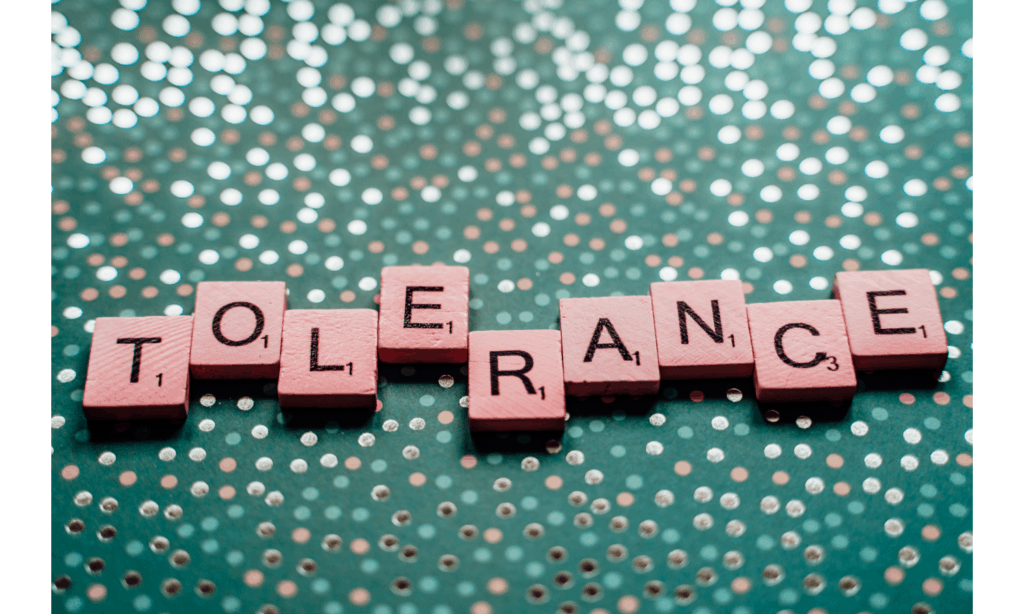What is Tolerance
With all the upheaval in the world today, it is obvious that we lack tolerance for others, people who don’t have the same outlook on certain issues or opinions that differ from our own. Without acceptance that not all people think the same way, we tend to get single-minded, and it may cause conflict. This is why we all need to learn to practice tolerance.
Merriam Webster defines tolerance as “sympathy or indulgence for beliefs or practices differing from or conflicting with one’s own.” As a virtue, tolerance implies that one accepts the difference in others. A tolerant person is a good listener who strives to understand the stance of other’s opinions.
Tolerant people are generally free of prejudice and discrimination without giving way to their own values and opinions. They don’t expect others to think, look, or speak just as they do but rather strive to understand their counterpart’s thought processes in an effort to coexist in harmony.
Why is Tolerance of Others Important?
It is important to strive for acceptance of other’s views even if they don’t align with your own. Tolerance between people makes it possible for conflicting beliefs, values, and ideas to coexist with respect as long as they fit within acceptable moral values. Meaning, you don’t need to throw your values by the wayside, but rather try and understand why some people think differently from you and accept them for who they are.
Unlike prejudice, tolerance can be grounded in the moral domain, which offers a positive approach. We have a positive civic and moral duty to offer respect, equality, and liberty. Mutual respect between people is a value we should all work towards.
Best of all, acceptance and the practice of tolerance leads to inner and outer peace.
How to Practice Tolerance
Okay. We now know that we need to have tolerance for other’s feelings and viewpoints so that we may live in better harmony. But how do we go about learning to build tolerance in our society? First, imagine if more people would take the steps below to listen and ponder other people’s viewpoints to understand why people think and do what they do. Second, imagine if more people would examine their own selves as to why we think the way we do.
Learn to Listen
The first step to practice tolerance is to take the time to LISTEN. Develop a curiosity and ask questions to learn more about why they think differently than you do. It could be that we don’t understand them and need more information. Try to cultivate an open mind when other’s viewpoints differ from your own.
Rather than just jumping in with your views, pause and practice respect and patience. If we slow down to listen, we just might find a way to come to an understanding.
Ask Questions
Ask questions to gain clarity on someone’s views. To better understand someone’s perspective, you can ask questions without being aggressive or intolerant. Instead, say something like, “What makes you think that?” or “Tell me more about that.”
By asking questions, rather than immediately defending your stance, you gain mutual respect and understanding.
Gain Perception
Once you have listened to a person’s viewpoint and asked questions to gain clarity, then put yourself in their shoes. Each person develops their perspective due to their life experience. Other’s experiences will be different from your own, so the way they see things will be different. Would you understand their point of view if you had their experiences?
It is impossible to be accepted by all, so understand that there will be differences in opinion and that you may not convince someone to agree with your perspective.
Challenge Yourself
Analyze your feelings of intolerance to understand the roots of your thoughts. In so doing, you will be able to recognize them and challenge them.
Take ownership of your feelings and realize that no one can make you feel a certain way without your permission. It is okay to disagree with others. Understanding another’s perspective is the point. You do not necessarily need to change your stance but rather comprehend another’s perspective.
The practice of tolerance is more about your relationship with yourself and the understanding you have of others.
Remember the Golden Rule
You remember the golden rule we were all taught as we were growing up; treat others as you would want to be treated. Try using “I” statements rather than “you” statements to de-escalate any conversations that are beginning to become heated. By using “I” statements, your counterpart is more likely not to feel attacked.
Do unto other’s as you would have them do unto you
Learn to appreciate and value differences in others. Strive to adopt a more open-minded outlook and, most importantly, respect other’s differences and treat them the way that you want to be treated in return.
Empathize and Adapt
Try to empathize and see things from their perspective. You may have different backgrounds or experiences which shape one’s perspective. What may seem obvious to you might seem strange to someone else based on their own experiences. Learn and adapt to one another to find common ground.
When trying to gain perspective, remember that someone has shown you kindness and patience even in your worst of times. Now it is your turn to pay it forward.
Agree to Disagree
Once you have taken the time to listen, ask questions, and gain clarity to another’s perspective, you may find that you still disagree. That is ok! Remember that tolerance does not mean that you need to change your thinking or perspective, but rather understand the differing views.
Stop trying to convince someone of your opinion. Yes, share your perspective, but don’t expect everyone to see it your way. It is ok to agree to disagree on some subjects.
If you can’t see eye to eye on certain subjects, sometimes it is best to avoid that subject matter altogether and ignore your differences. That is why some friends agree not to discuss politics, gun control, vaccinations, and the such. But, of course, you can still be friends and not agree on certain subjects. That does not make them or you a good or bad person.
Develop Your Self Esteem
Work on yourself and develop your self-esteem. By examining and reflecting on your own intolerances, you will clarify why you think the way you do. If you feel secure and confident in yourself, you may find that you are more open-minded and tolerant of others.
How to Address a Conflict
Conflict can still happen even when following the steps above. Unfortunately, I can’t recall where I learned this technique, but it is a great example of words you can model to navigate conflict.
- Start with “I” statements when addressing what offends you. “I don’t agree with your stance on gun control.”
- Then get a better understanding of the other’s perspective (ask questions) “What experiences did you have that lead you to think about gun control in that way?” or “Tell me more about that.”
- Share your views in a respectful manner. “I think that we should make it more difficult to obtain guns because…..”
- Then begin to negotiate. “While I don’t agree with your views, I do have a better understanding of them.” Or “I never really thought of it that way.”
Quotes to Practice Tolerance








Affirmations About Tolerance
- I celebrate life’s diversity fully each day.
- I accept others exactly for who they are.
- Kindness, compassion, TOLERANCE, and forgiveness are the cornerstones of unconditional love.
- I am a good listener to other’s opinions.
- I give blessings to my global family.
- Today, I will practice patience and loving-kindness to everyone I encounter.
- I accept people as they are.
- I acknowledge that everyone is doing the best they can with what they have.
- Today, I am open to other people’s opinions.
The Last Thing You Need to Know About Practicing Tolerance
Practicing tolerance does not mean that we abandon our own beliefs but rather accept and embrace what we don’t understand. The best way to practice tolerance is with love and compassion.
By embracing the core value of practicing tolerance, you may keep your perspective. You may also find yourself changing the way you think once given another’s perspective and understanding why.
Most importantly, we can learn to coexist with an understanding of differing views. And maybe…. we can live in harmony.
If you liked this article about core values, you may also like:


